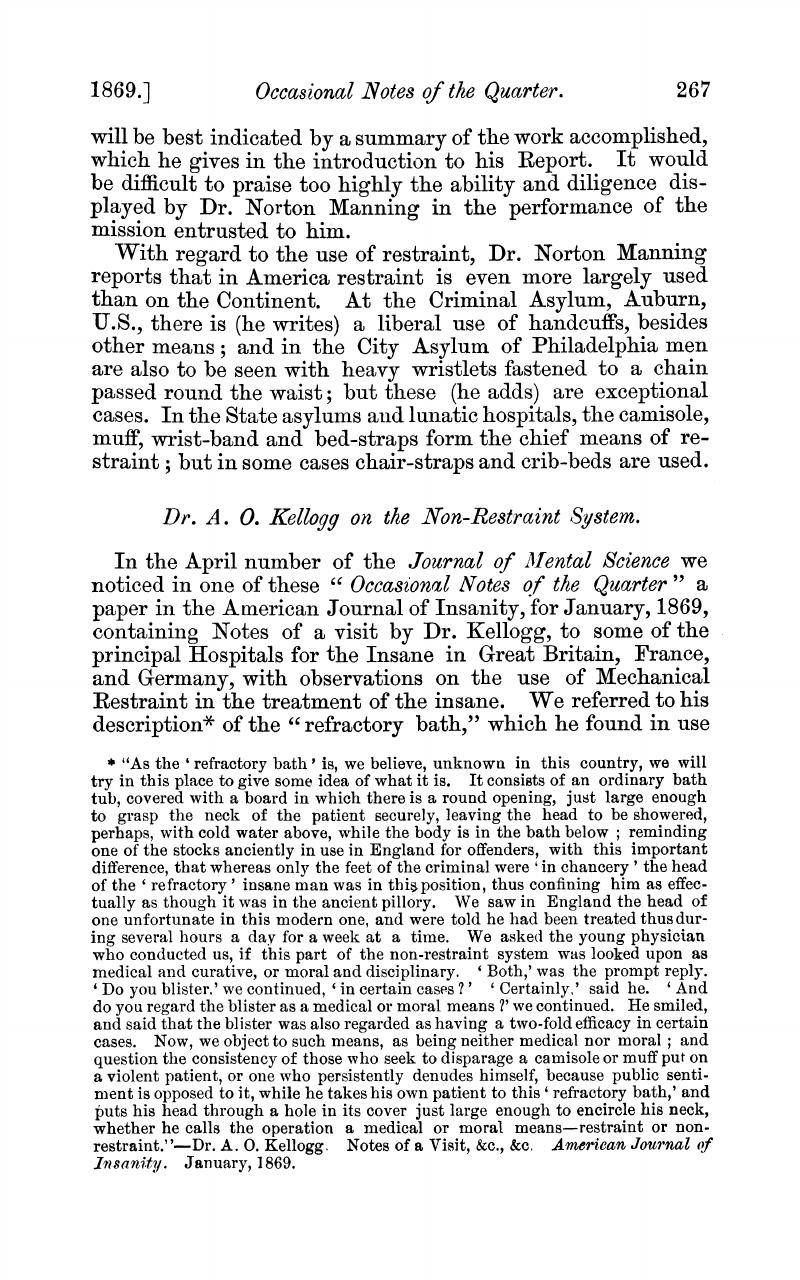No CrossRef data available.
Published online by Cambridge University Press: 19 February 2018

∗ “As the ‘refractory bath’ is, we believe, unknown in this country, we will try in this place to give some idea of what it is. It consists of an ordinary bath tub, covered with a board in which there is a round opening, just large enough to grasp the neck of the patient securely, leaving the head to be showered, perhaps, with cold water above, while the body is in the bath below; reminding one of the stocks anciently in use in England for offenders, with this important difference, that whereas only the feet of the criminal were ‘in chancery’ the head of the ‘refractory’ insane man was in this position, thus confining him as effectually as though it was in the ancient pillory. We saw in England the head of one unfortunate in this modern one, and were told he had been treated thus during several hours a day for a week at a time. We asked the young physician who conducted us, if this part of the non-restraint system was looked upon as medical and curative, or moral and disciplinary. ‘Both,’ was the prompt reply. ‘Do you blister.’ we continued, ‘in certain cases?’ ‘Certainly,’ said he. ‘And do you regard the blister as a medical or moral means ?’ we continued. He smiled, and said that the blister was also regarded as having a two-fold efficacy in certain cases. Now, we object to such means, as being neither medical nor moral; and question the consistency of those who seek to disparage a camisole or muff put on a violent patient, or one who persistently denudes himself, because public sentiment is opposed to it, while he takes his own patient to this ‘refractory bath,’ and puts his head through a hole in its cover just large enough to encircle his neck, whether he calls the operation a medical or moral means—restraint or non-restraint.”—Dr. A. O. Kellogg. Notes of a Visit, &c, &c. American Journal of Insanity. January, 1869.Google Scholar
eLetters
No eLetters have been published for this article.